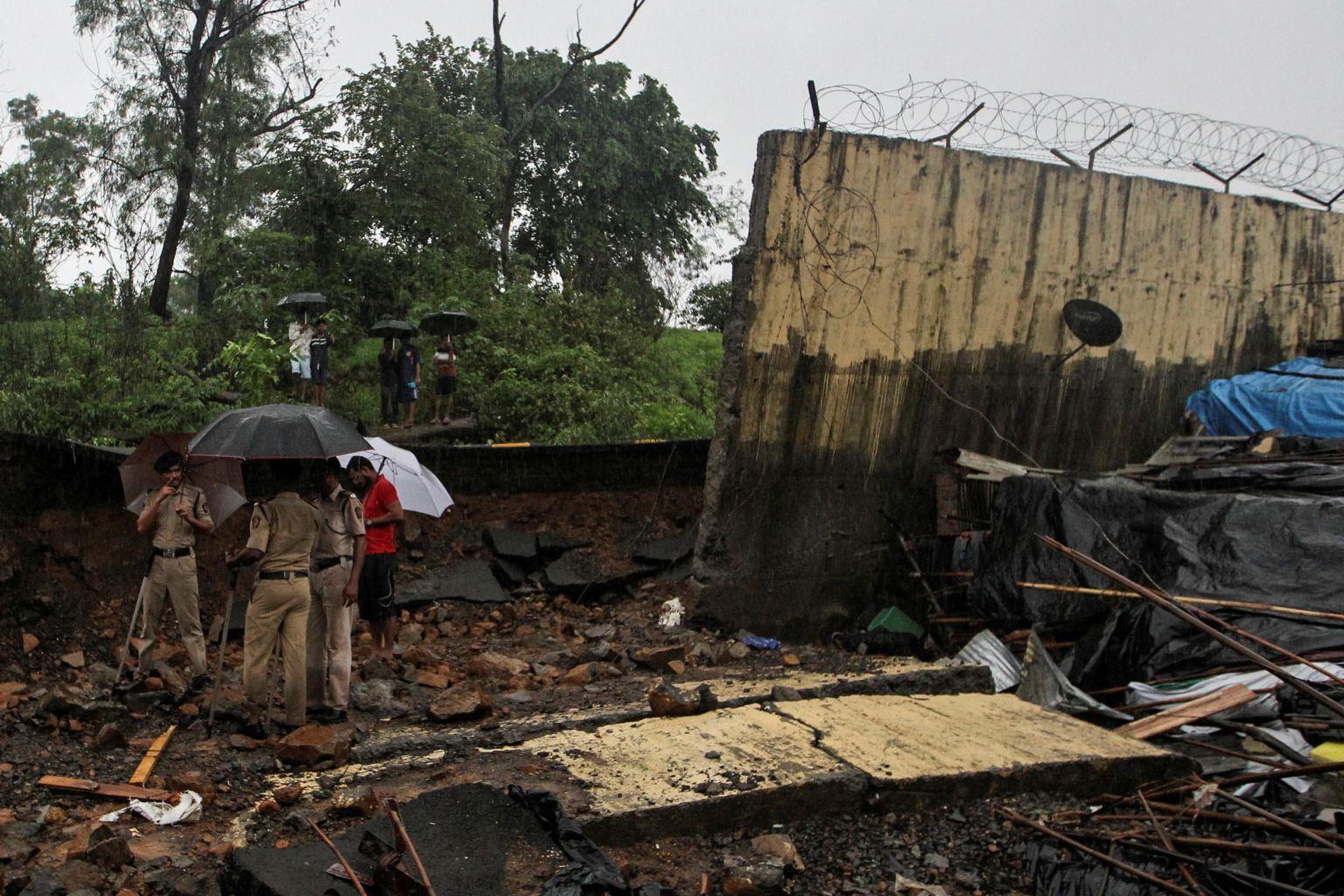Heavy rains in India's Mumbai cause wall collapse that kills 27
Sign up now: Get ST's newsletters delivered to your inbox

Police personnel stand among the debris after a wall collapsed due to heavy rain in Mumbai, India, on July 2, 2019.
PHOTO: REUTERS
Follow topic:
MUMBAI (REUTERS, AFP) - Monsoon rain caused wall collapses in India's financial capital of Mumbai on Tuesday (July 2), killing at least 27 people as a second straight day of heavy rain disrupted rail and air traffic, forcing authorities to declare a public holiday.
The incident also injured 69 people.
Mumbai is looking to turn itself into a global financial hub but large parts of the city struggle to cope with annual monsoon rains, as widespread construction and garbage-clogged drains and waterways make it increasingly vulnerable to chaos.
The rain brought the wall crashing down on shanties built on a hill slope in Malad, a western suburb, a fire brigade official said, killing at least 18 people.
"Rescue operations are underway and more details are awaited. Besides, a team of fire brigade and local police also reached the spot and took control of the situation," a National Disaster Response Force official told the Press Trust of India news agency.
Three people died when a school wall collapsed in the city of Kalyan, 42km north of Mumbai.
In the nearby western city of Pune, six people were killed in a wall collapse on Tuesday, a fire brigade official said, after a similar incident on Saturday killed 15.
More than 300mm of rain fell over 24 hours in some areas, flooding streets and railway tracks, forcing the suspension of some suburban train services, which millions of commuters ride to work each day.
As weather officials forecast intermittent heavy showers and isolated extremely heavy rainfall, municipal authorities said the state government had called a public holiday. Schools and colleges were closed.
"Rain is expected to remain intense even today," they said on social network Twitter. "We request you to stay indoors unless there's an emergency."
Flights from Mumbai airport, India's second biggest, were also delayed after a SpiceJet flight overshot the runway while landing, an airport spokeswoman said.
Train services on Mumbai's colonial-era rail network, a lifeline for the city's population, were reduced due to waterlogged tracks while motorists were seen pushing cars through flooded streets.
During every monsoon season, which runs from June to September, India experiences fatal incidents of building and wall collapses as rainfall weakens the foundations of poorly-built structures.
In 2005, floods killed more than 500 people in Mumbai, the majority in shantytown slums home to more than half the city's population.
In August 2017, intense rainfall brought the commercial hub to a virtual standstill for two days and left at least 10 people dead.
Building collapses are common during the monsoon when dilapidated structures buckle under the weight of continuous rain.
Activists say Mumbai's susceptibility to floods has worsened in recent years due to a construction boom that is trying to keep up with the city's swelling population.
Much of Mumbai's mangrove cover, which is extremely effective in helping to drain water, has been destroyed over the past decade to make way for glitzy high-rises.
According to various studies, anywhere between 40 to 50 per cent of the city's population live in slums, which become a sea of blue tarpaulin every monsoon as residents try to keep out the rain.

